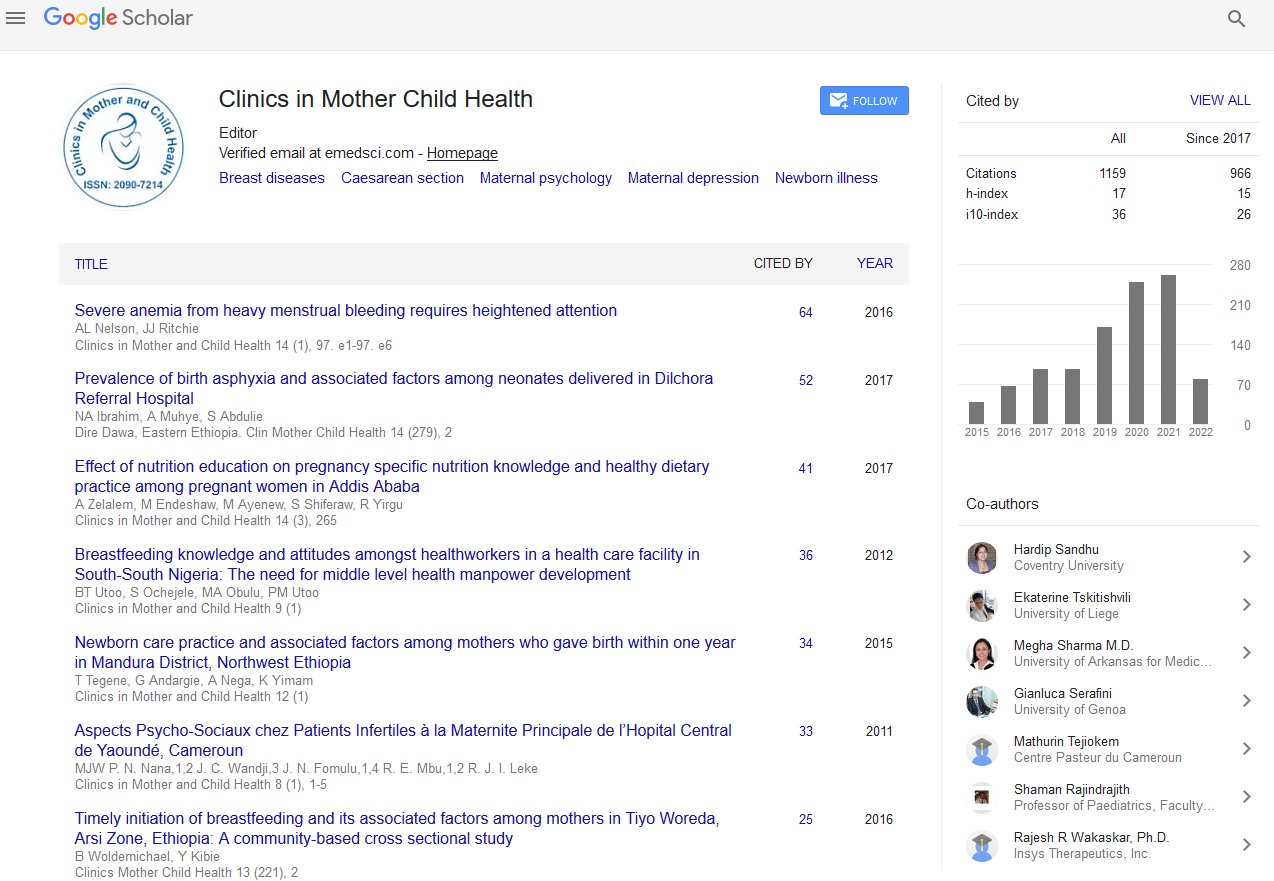Indexed In
- Genamics JournalSeek
- RefSeek
- Hamdard University
- EBSCO A-Z
- Publons
- Geneva Foundation for Medical Education and Research
- Euro Pub
- Google Scholar
Useful Links
Share This Page
Journal Flyer

Open Access Journals
- Agri and Aquaculture
- Biochemistry
- Bioinformatics & Systems Biology
- Business & Management
- Chemistry
- Clinical Sciences
- Engineering
- Food & Nutrition
- General Science
- Genetics & Molecular Biology
- Immunology & Microbiology
- Medical Sciences
- Neuroscience & Psychology
- Nursing & Health Care
- Pharmaceutical Sciences
Abstract
Evaluation of Predictive Value of Uterine Artery Doppler Indices versus Histopathology Sampling in Detection of Abnormal Uterine Bleeding in Intrauterine Contraceptive Device Users
Mai Ahmed Gobran*, Sabah Mohamed El Hanafy, Walid Mohamed Elnagar, Ahmed Mahmoud Abdou Ahmed, Amr Ahmed Abdelrhman, Mohamed El-Bakry Lashin, Yasser S. Saraya, Eman Ramadan Abd El Fattah, Khaled Fathy Helal, Hebatullah Abulkhair, Abeer M Abdel Barry and Mohamed SH Ramadan
Background: Contraceptive intrauterine device (IUD) is a successful method of contraception that has been used for more than 30 years. However, it is associated with excessive uterine bleeding, that might cause iron deficiency anaemia, making CIUD use inconvenient for many women especially those with severe menstruation.
Objective: The objective of our study was to evaluate the correlation between abnormal uterine bleeding in IUD with endometrial sampling.
Methods: Study included 120 women from the obstetrics and gynaecology departments of Zagazig University Hospitals, divided into three groups: Group I included 40 women who used intrauterine coipper (TCu-380A) and complained of menorrhagia or menometrorrhagia. Group II included 40 womenusing CIUD and not complaining of abnormal uterine bleeding. Group III included 40 women complaining of vaginal discharge or requesting CIUD insertion, and not complaining of abnormal uterine bleeding as a control group.
Results: PI and RI were significantly lower in IUD-induced irregular bleeding than in IUD-induced women who did not complain of abnormal vaginal bleeding.
Conclusion: Endometrial biopsy has no role in predicting the abnormal uterine bleeding cause. Transvaginal ultrasonography findings can be efficiently used to classify women at risk of experiencing excessive uterine bleeding following CIUD insertion and to make a preliminary diagnosis, thus, notify the pathologists.
Published Date: 2021-03-22; Received Date: 2021-03-01


